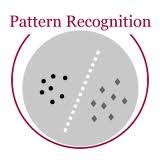Kirilov et al (2019) develop a metric, called Panoptic Quality (PQ), to evaluate image segmentation methods. The metric is based on a confusion table, and compares a predicted to a ground truth segmentation. The only non straightforward part in this comparison is to align the segments in the two segmentations. A metric only works well if that alignment is a partial bijection. Kirilov et al (2019) list 3 desirable properties for a definition of alignment: it should be simple, interpretable and effectively computable. There are many definitions guaranteeing a partial bijection and these 3 properties. We present the weakest: one that is both sufficient and necessary to guarantee that the alignment is a partial bijection. This new condition is effectively computable and natural. It simply says that the number of correctly predicted elements (in image segmentation, the pixels) should be larger than the number of missed, and larger than the number of spurious elements. This is strictly weaker than the proposal in Kirilov et al (2019). In formulas, instead of |TP|> |FN\textbar| + |FP|, the weaker condition requires that |TP|> |FN| and |TP| > |FP|. We evaluate the new alignment condition theoretically and empirically.
翻译:基里洛夫等人 (2019年) 开发了一种称为 Panpopic 质量 (PQ) 的量度, 以评价图像分割法。 该量度基于一个混乱的表格, 并将预测值比作一个地面的真相分割法。 比较中唯一非直接部分是将两个区段的部段对齐。 量度只有在对齐是一个局部的两截线的情况下才有效。 基里洛夫等人( 2019年) 列出了用于定义校正定义的3个理想属性: 它应该简单、 可解释和有效可调和。 有许多定义保证部分双弹和这3个属性。 我们给出了最弱的公式: 既足够又必要, 保证对齐点是一个局部的双截。 这个新条件实际上可以比较自然。 它只是说, 正确预测的元素( 图像分割, 像素) 数量应该大于缺失的元素数量, 大于刺激元素的数量。 这严格来说比基里洛夫等人( 2019年) 的提案更弱。 在公式中, 而不是 TP\\\\\\\\\\\\\\ n kextbar *+ *+ *+ * + *\\\\\\\\\\\\\\\\\\\\\\\\\\\\\\\\\\\\\\\\\\\\\\\\\\\\\\\\\\\\\\\\\\\\\\\\\\\\\\\\\\\\\\\\\\\\\\\\\\\\\\\\\\\\\\\\\\\\\\\\\\\\\\\\\\\\\\\\\\\\\\\\\\\\\\\\\\\\\\\\\\\\\\\\\\\\\\\\\\\\\\\\\\\\\\\\\\\\\\\\\\\\\\\\\\\\\\\\\\\\\\\\\\\\\\\\\\\\\\\\\\\\



